  Places of interestOn this list you'll find the most important places of interest in Friland and Hiveria in alphabetic order. Of course these are only the most well-known places of interest; in Friland and Hiveria there is much more to discover! Friland: Aigardam: large dam in the Damlag, built in 1959. The dam supplies over 800.000 people with green electricity every day. Algunțsfasten (Fort Algunț): after the loss of East Walamark in the Fourth Frilandic-Hiverian War, this fortress was built at the narrow strait between Riksga and Walamark. It not only monitors access to the Innansai but is also intended to stop a potential Hiverian attack at the Skimferț. Although the usefulness of the fortress has diminished in modern warfare, the modernized artillery and anti-aircraft guns are still a difficult obstacle. The fortress was built in the period 1883-1885 and named after the then queen Algunț. Daudanberg (Mountain of the Dead): according to many this is the most impressive monument of Friland, situated in the shire of Medga between Twaibak and Ermanhuf. This large mound dates from the Iron Age and is still in use; for thousands of years many generations of Frilanders chose to have their body or ashes buried on the Daudanberg ("Mountain of the Dead") to be as close to their ancestors as possible. Even today people can still be buried here. The relatives bring sand from the native soil of the deceased, add this to the mound and bury the urn or casket in it. Because of this the Daudanberg slowly continues to grow and is already visible above the horizon from a few kilometers distance. As you can imagine this is the holiest place of Friland. Pilgrims come from far and wide to honour their ancestors at the Daudanberg. 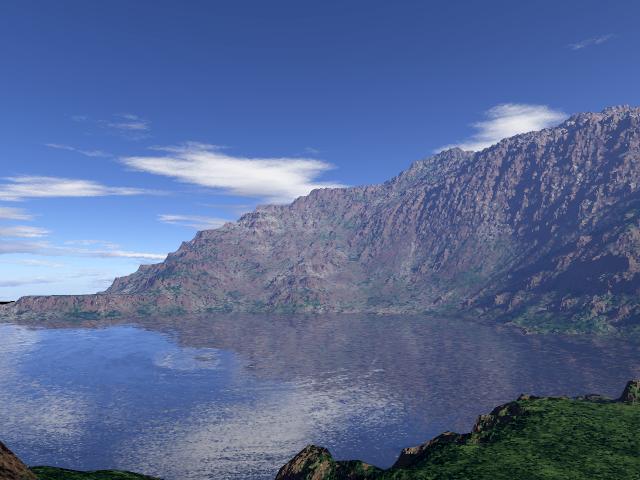 The oldest part of the Daudanberg, where the slope has become too steep for new burials. Frilandisk Utstallung (Frilandic Museum): the Frilandic word for museum is "utstallung" (display), which can be applied to both historical objects and works of art. The Frilandic Museum is situated near Isungan and is the biggest museum in the country. It contains everything from dinosaur skeletons to harnesses and from paintings to an extensive coin collection. The museum is so big that history lovers will need four days to see everything. Frireta (Frilandic Computer Industry): right outside the city limits of Dunwik lies Frireta, the center of the Frilandic computer industry. Frireta is an abbreviation of "Frilandiska Rekanar Tawung" (Frilandic Computer Industry). Everything that is remotely connected to computers or similar technology is being made here. Many large technology companies are located here. 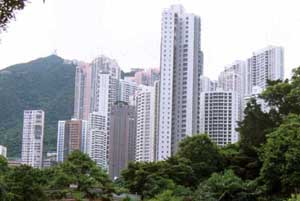 Office complex in Frireta. 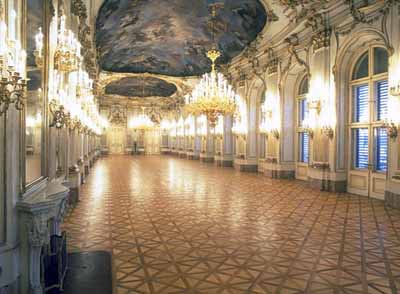 The entry hall of the Fulksslut. Gulțan Wi (Golden Temple): the Gulțan Wi is the biggest temple of Friland and is situated near the Ingswalț, southwest of Sunțfan. It is dedicated to the Ferna Sed gods and according to folklore it was built by the god Ing. The temple is decorated with gold and around the roof hangs a golden chain, which can shine beautifully at sunny days. In the temple are statues of the gods and at the entrance stands a holy oak with a well next to it. According to many people the water from the well has healing powers. Every year at the beginning of spring the Jerblot ("Year-offering") is made to the gods. The temple rituals following this event last for nine days. Laujanburg (Lionborough): the official residence of the prime minister in Riksgard, built in Art Deco style. Riksțing (Government building): the government building in Riksgard where the Frilandic parliament is seated. The building has the same name as the parliament: Riksțing ("Kingdom Assembly"). The building is freely accessible for everybody who would like to follow the debates. 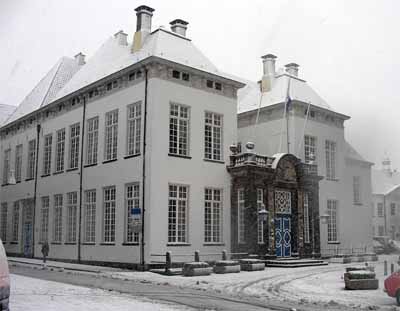 The main entrance of the Riksțing. 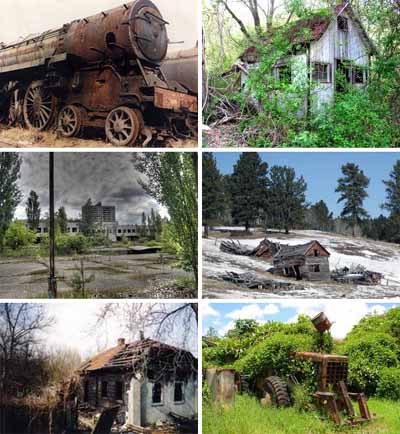 Abandoned villages in the Sparwalț. Storban 1 (Highway 1): the Storban 1 (S1) is also called "the Frilandic Route 66" and runs from west to east. It gives travelers the chance to experience the varied Frilandic landscape: the route starts at Anstarburg and leads successively along the fens and fields of Skak, the Long Mountain Range (Langfergun), the industrial city of Isarnhaim, the Ice Forest (Iswalț), the Trolls Heath (Trullanhaiț) and the Mistwood (Nebulwalț), the rugged Middleshire (Medga), modern Dunwik, the Connection Bridge (Wedungsbrug) and historic Spirdung. The official route ends at the Hiverian border in the divided city of West Runsburg. To stimulate tourism, Hiveria extended the route to the east coast in the 1970s, allowing the journey to continue through occupied East Walamark, past the city of Heunia, the Great Heath (Bruyère Grand) and Wetmoor (Marais Mouillé) to the end point; the port city of Danab. Sturaldsgrab (Sturalds grave): the mausoleum of Sturaldiz, the first king of Friland. The sober Sturaldiz lay buried in a simple mound but in the 16th century it was decided to build a Renaissance-style mausoleum on top of it. The mausoleum is situated at the Atlantic coast, north of Gennung. Turstad (Tower city): Turstad got her name from the large number of pointed towers that rise above the buildings. Not only churches, temples and government buildings have towers but even many old houses and schools have their own little tower. This tradition started in the 16th century, when a rich inhabitant of the city was so bold to build a higher tower on his house than the one on the city hall. The municipality retaliated by building a high church tower, which prompted another rich citizen to build a temple with four towers. This competition lasted for almost two centuries, with the result that a large portion of the city is equipped with towers, one even more beautiful than the other. Utanutstallung Ingswalț (Open Air Museum Ingswalț): in this museum in Sunțfan a large number of historical buildings can be seen. Besides that the museum organises performances and even the re-enactment of historical battles. Waldmerskirik (Waldemars church): in the Waldmerskirik, northeast of Herutlau, one can find the tomb of the Frankish missionary Waldemar, who tried to spread Christianity in Friland without much success. The church was built on top of a rock by his followers and most of it burned down in 1432 after it was hit by lightning. It was rebuilt bigger and more beautiful than ever before. Wedungsbrug (Connection bridge): the Wedungsbrug is the longest bridge of Friland and was built in 1952. It spans the narrow waterway between the shires Riksga and Walamark. Before this there was a ferry service. 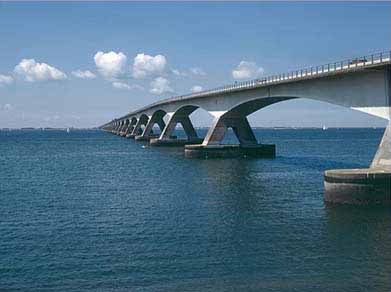 The Wedungsbrug. Wulfsdeup (Wolf Depth): bunker complex, built in the mountains south of the Țeudrikspit. In use for unspecified military purposes. In case of an emergency, the government and military command can be accommodated here. Hiveria: Bruyère Grand (Great Heath): a "place of interest" where Hiveria is not so proud of. There used to be a beautiful nature reserve there with woods and grassy plains but since the 11th century the area was intensively used for agriculture and wood production, with the result that all woods in the area disappeared and the soil became infertile. These days the area looks most like a combination of heath and desert. The Bruyère Grand covers about one third of the province of Danab. La Cathedrale Saint Gérard (the Cathedral of Saint Gérard): the cathedral stands in the city with the same name. It was built in the 15th century and is still the biggest cathedral in Hiveria. 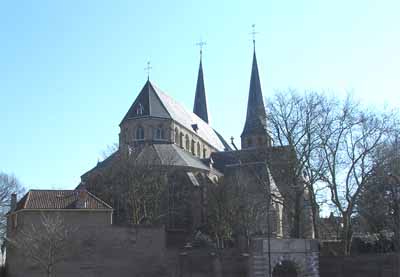 La Cathedrale Saint Gérard. 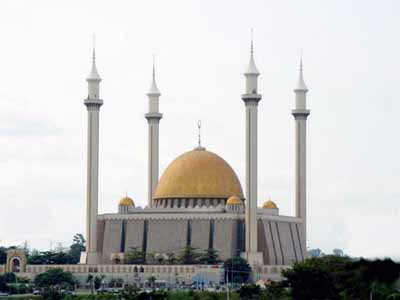 The Masjid al-Jamme. Stade de Hiveria (Hiveria Stadium): this large stadium was built in 1994 and lies in the city of St. Gérard. Trou Diable (Devils hole): the Trou Diable is a crater of 1100 meter diameter, which was created 70.000 years ago by the impact of a small meteorite.  |